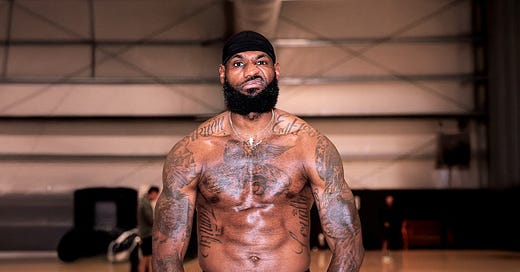It is a tragicomic peculiarity of our times that adolescent athletes—barely formed, not yet metabolically mature—are being conditioned, not through rational progression, but via spectacle masquerading as science. Their bodies, not yet readied by foundational strength or informed by anatomical literacy, are conscripted into regimens designed for Instagram virality, not physiological development.
And when these bodies fracture under that strain—as they inevitably do—we feign surprise.
One might pardon such miscalculation were it not so orchestrated. But this is no innocent error. It is an industry-wide inversion of principle: the replacement of preparation with performance, and of pedagogy with pageantry.
There was once a time—quaint, perhaps—when young athletes built their strength through patient increments: learning to hinge before they snatched, to squat before they sprinted, to stabilize before they cut. Today, that has been supplanted by a new orthodoxy: early specialization, maximalist scheduling, and strength programs designed less for efficacy than for optics.
Avery Faigenbaum and his colleagues, in a study of resistance training among youth, demonstrate the obvious: that proper, progressive strength training reduces injury rates, rather than exacerbates them (Faigenbaum et al.). Yet this is not the gospel followed. What prevails instead is a concatenation of well-intentioned delusion and commercial opportunism—where complexity is introduced before competence, and specificity replaces structure.
The average 14-year-old cannot hold a plank for 30 seconds, yet is instructed to perform barbell snatches. When the inevitable back strain emerges, no one is indicted. We blame the child’s “form.” Rarely the form of the curriculum.
The error is systemic. It is rooted in our refusal to acknowledge that strength, like scholarship, must begin with fundamentals. A movement cannot be fortified unless it is first understood. A body cannot be loaded unless it is first aligned. And yet we demand sport-specific performance from children who have never been taught general movement integrity.
This is not pedagogy. It is pantomime.
“General Physical Preparedness,” once a mainstay of athletic development, is now dismissed as rudimentary, irrelevant, or—worse—unmarketable (“General Physical Preparedness”). But what it built was durability. What it trained was adaptability. What it preserved was longevity.
These virtues, however, do not trend. They are too slow for reels, too subtle for likes.
The glut of strength coaches—each self-anointed, many underqualified—has created a new pantheon of false gods. Their pedagogy is derived from mimicry. Their methodology: derived from the professional ranks, and applied indiscriminately to bodies not yet ready for such burdens.
Parents, eager to serve their children opportunity, purchase this illusion wholesale. They invest not in strength but in simulation—hoping that through osmosis or optics, their child will acquire durability. What they acquire, more often, is dysfunction.
As one sports medicine report put plainly: there is no amount of sport-specific load that can replace general tissue capacity (“The Role of Strength Training in Preventing Sports Injuries”).
We are, as a culture, attempting to produce excellence while neglecting structure. It is the equivalent of demanding Shakespearean oratory from someone who cannot yet spell.
And when that athlete tears a ligament, strains a back, or suffers chronic pain at 16, we do not blame the conditioning that ignored the fundamentals. We blame the child’s lack of toughness.
The truth, of course, is both more banal and more damning: no one taught him to be durable.
Works Cited
Faigenbaum, Avery D., et al. “Resistance Training in Youth: Laying the Foundation for Injury Prevention and Physical Literacy.” Strength and Conditioning Journal, vol. 39, no. 3, 2017, pp. 20–29. ResearchGate, https://www.researchgate.net/publication/316531946.
“Youth Strength Training: Start with the Basics.” Pipeline Sports Performance, https://www.pipelinesportsperformance.com/becoming-the-1/youthstrengthtraining
“Youth Sports Injury Prevention.” Children’s Hospital Colorado, https://www.childrenscolorado.org/conditions-and-advice/sports-articles/sports-injuries/youth-sports-injury-prevention/
“General Physical Preparedness.” Wikipedia, Wikimedia Foundation, https://en.wikipedia.org/wiki/General_physical_preparedness.
“The Role of Strength Training in Preventing Sports Injuries.” Sports Medicine Center at Coordinated Health, https://sportsmedrockies.com/the-role-of-strength-training-in-preventing-sports-injuries.



